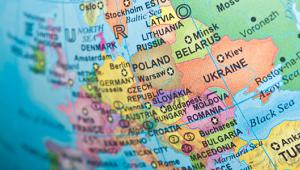web_arabsprings_istock_25812840_xlarge.jpg

Arab Spring protests in Cairo, Egypt in 2011. iStock
The UN Economic and Social Commission for Western Africa made the first attempt to estimate the impact conflicts in the region have had on its countries’ economies.
It noted that the initial promise of the Arab Spring had in the end not been realised. Citizens’ demands for a political voice, government accountability and equality were answered instead with substantial economic and human losses.
The Arab Spring started in Tunisia in 2011, when a young unemployed man set himself on fire triggering protests. These spread across the region, and saw the leaders of four countries ousted.
In other parts of the world, political transition has usually had positive impacts on growth, employment and macroeconomic stability in the long term.
However, the “process of political transition currently underway in the Arab region has not adhered to this pattern”, the UN said.
“The initial positive momentum has degenerated into chaos and insecurity, and transition in Libya, Syria and Yemen has transformed into war.”
These countries face the usual costs of being embroiled in conflict, including the loss of GDP and growth, physical and human capital and to the public accounts.
Health, education and civic systems have been largely destroyed, in Syria and Yemen in particular, and those who were unable to escape face poverty and hardship mostly unthinkable before conflict began.
Their neighbours, meanwhile, are hit with spill over effects, including a reduction in investment due to substantial uncertainty, refugee crises, and interrupted trade.
These have been coupled with the impact of ongoing conflicts in the region that began before 2011, the individually devastating collapse in oil prices, and the fact that political transitions have not been backed by reforms addressing the issues that led to unrest in the first place.
So while many post-conflict nations have seen a growth rebound after emerging from war or unrest with a new political system, the countries the UN studied are currently not set on the same trajectory.
Instead, the region has lost the equivalent of 6% of its GDP based on pre-crisis projections, and the upheaval has led to increased debt, corruption, unemployment and held back social development.
The International Monetary Fund has estimated it will take Syria two decades to recover from a disastrous civil war that has dragged on for almost six years, and resulted in what the fund called “unprecedented” devastation.
Repairing damaged infrastructure alone is expected to cost the country up to three times its pre-conflict GDP.













